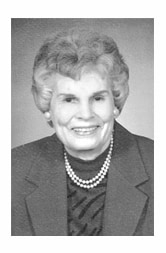I’ve long been intrigued with the Underground Railroad and the ways it served in Morrow County. Referring to the many pages of information I have on this subject, my immediate focus falls on the “Station” located on the corner of State Route 746 and State Route 529 west of Cardington.
Although the house is just inside Marion County, it was counted as one of 19 stations in Morrow County. I have a photo of this house taken in the mid 1800’s and published as part of an historical tour. Trees line the front yard where a wooden fence with a gate borders it, a scene not related to the view of that house today.
It was built in the early 1800s by Joseph Morris, a Quaker, who conducted one of the mot important stations in the underground railway between the Ohio River and Great Lakes. The Morris home was recognized as a stronghold of abolitionists and the record, so far as known, shows that no slave after entering his door, was ever recaptured.
The route from Ripley on the Ohio River led through Chillicothe, Delaware, Marion and Sandusky. The cellar of this house had two secret chambers, one, the tunnel leading to the carriage shed which was hidden by a shelf, while the garret had false doors, panels and partitions. Mr. Morris died in 1899 at the age of 95.
My personal interest in this house is related to my close friend, Ruth Smith Farmer, now deceased, whose grandparents, Otto and Emma Schwartz resided in the house for many years. Ruth related to me that at one time they did find the remnants of a wood piece under the ground in the area of what would be the tunnel leading to the shed.
Steve Smith, a great grand son of the Schwartz’ grew up in the house with his parents, Doyle and Marilyn Smith and brother, and told me they could never find any remnant of the tunnels in the minor digging that was done but they took in the fact that it had been over 150 years since those tunnels had been used. Current resident of the house is Mark Lemmon.
The Underground railroad functioned in 1825 and later as slaves sought to find their way to Canada. There were five underground routes in Morrow County and it was actually a system of moving runaways secretly from one shelter to another by foot, horseback or wagon. The system was conducted principally by the Quaker Community. One of those stations was on the west side of the curve on Highway 42 before reaching the Friends Church.
In the Gilead Quaker settlement the Mosher and Woods families were among the most active participants in this work. Only once during those years of this activity did runaways get recaptured. Five fugitives stopped at the the cabin home of Asa and Bethiah Mosher in 1819 seeking refuge and food. They were fed and kept over night and stayed on until late the next day. Suddenly their masters appeared with drawn guns and charged the fugitive slaves with theft. They were taken away and the Moshers were helpless to save them.
The Moshers later built a frame house in 1832 and according to the book, “Vignettes of Morrow County” by Charles Mosher, that house still stands northwest of “Quaker Corners” two miles south of Mt. Gilead on the curve of Highway 42. This book covers the county’s role in the underground railroad with many well-researched short stories.
A more positive outcome was described in a story published in the Aug. 17, 1893, edition of The Sentinel: “A woman with her small child ran away from her master and stopped at a cabin station.”
The mistress of the cabin saw two men coming toward the house one day She hurried the woman and child through a trap door in floor into a small cellar. Then, replacing the door, she spread a piece of carpet over it, set her spinning wheel on it and commenced to spin. The woman’s master and an officer were soon at the door with a search warrant. The master said he had come to get her.
The woman told them they could search the house if they chose. They soon went through the cabin but failed to find the fugitives. The woman kept the spinning wheel going for fear the little child would betray the hiding place as it was too young to understand to be quiet. After searching the cabin, the master and his officer left to search elsewhere. The mother and child were kept in the underground railway station until all danger was past, then forwarded to Canada.”
The late James Miller wrote an in-depth article on Morrow County’s role in the underground railroad that was published in the Morrow County Sentinel Feb. 18, 1998. A map of the underground rail routes and stations was published in that same issue.
Thank you to Steve Smith, Mark Lemmon and Stan Sipe for their contributions to this story.






